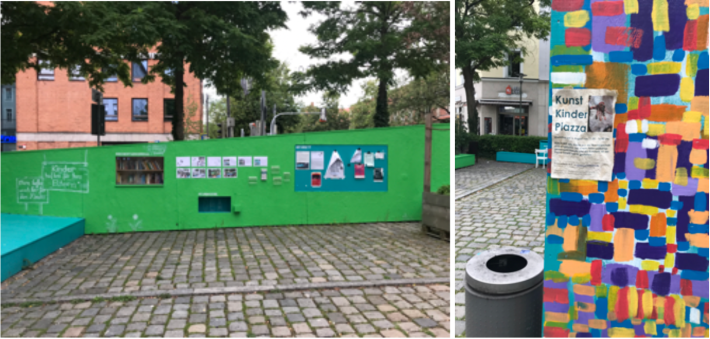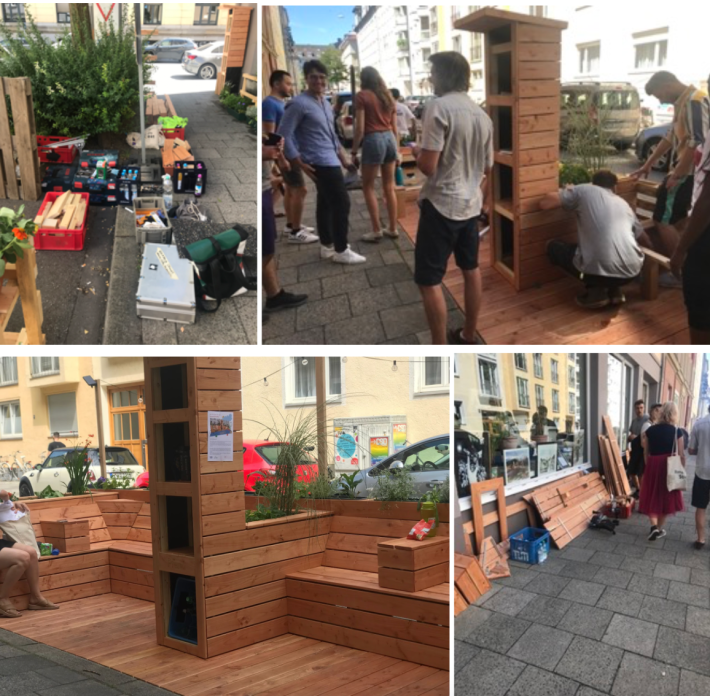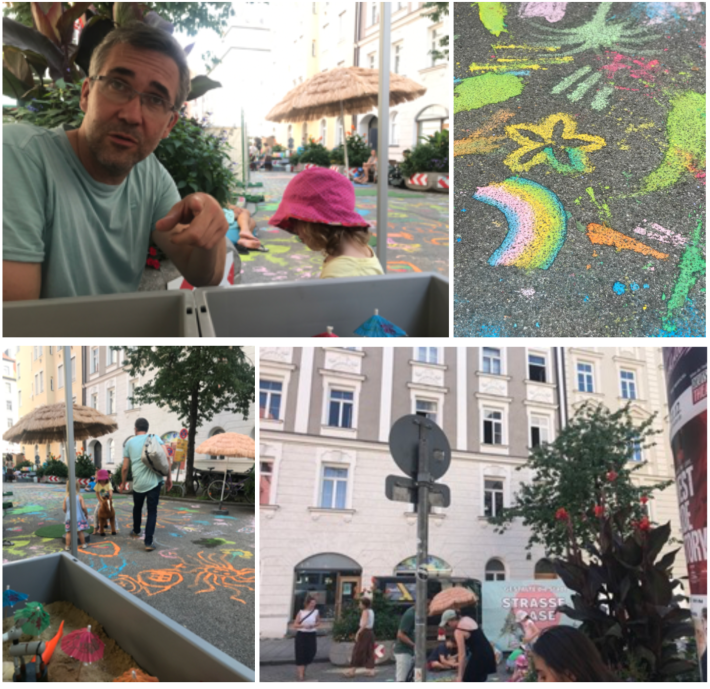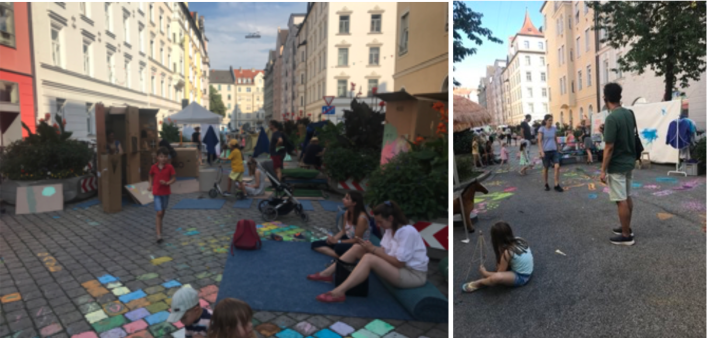In 2022, when bike buses were gaining momentum in the United States, I led my first bike bus on Bike to School Day. After that experience I was left to consider all the stones we’d left unturned in our search for safe and joyful streets, many of which I’d never considered.
That summer, I embarked on a learning tour of Munich and Rotterdam called Remaking the Streets. As a special education teacher, I shared what I know about child development and human behavior, while the urban planners and designers in the class shared their knowledge of street designs and experiments that can lead to reframing our ideas of who streets are for and their many possibilities.
Here are three of the best ideas I brought home with me.
1. Put in a parklet
While a parklet might start as a one-day project — perhaps for international Park(ing) Day — these placemaking powerhouses can easily become a permanent or semi-permanent fixture of your school community.
In Munich, the Piazza Zenetti is a parklet-turned-permanent-plaza. Formerly a parking lot, the space today is host to community events, blooming greenery, and space where neighborhood children can sit and stay for a while.

In other locations, such as the Technical University of Munich (TUM) campus, modular wooden parklets containing benches, bike racks, bottle recycling, and a little free library are put up each April and removed in October, providing a seasonal play and relaxation oasis.
During the summer school course, participants helped build a parklet on the TUM campus for local enjoyment. That’s much preferable to a location to the spot just around the corner where I spotted a young child playing on a concrete and metal train grate, because there was no other bench or play space on the street for her and her father to take a break from their shopping.

2. Create an Open Street
Strasse Oase is a pop-up “open street” — a.k.a., a road that’s closed to vehicle traffic — that takes place next to a school in Munich, Germany, with a focus on children’s engagement. On the street, a variety of stations are set up for children to enjoy the repurposed space that would usually been seen as unhospitable to children and designated only for people in cars.

The space is completely transformed with some simple materials such as cloth, sticks, cardboard boxes, and chalk paint. There were also stations devoted to sand play, water play, scent-making, and other activities for the kids to enjoy. Children were counting, chatting, and acting as scientists, artists, and builders, and the street offered them a space to experience joyful, holistic development.

My favorite moment viewing this space was when a toddler, only speaking German, approached me at the sand table and we counted seashells together despite my lack of German fluency, her teaching me eine, zwie... Play is a universal language for connection and happiness, if only we create the space to do so.

3. Green the streets
In the Netherlands, there is a competition between municipalities to see who can “green” more of their sidewalks and concrete-tile covered areas by replacing them with plant life. What began as a friendly rivalry between Amsterdam and Rotterdam to flip the most tiles into sidewalk gardens has spread across the nation, including schools such as De Schakel Basisschool and Openbaar Kindcentrum het Maasveld.
This same solution could be implemented in school parking lots, driveways, or along side-streets near schools in the U.S., too.

These were just a few of the ways in which the city and national governance of Munich and Rotterdam removed or revised bureaucracy to encourage community and sustainability. The infrastructure supports kids’ independence, safety, playfulness, and joy — while also supporting citizens of all other age groups, too!

Since returning from this learning experience, I’ve worked to implement many of these possibilities in my own school community. We now have repurposed a parking space with room for 12 bikes to park along with green planters, as well as improved green spaces around the tree pits of our school. We’ve continued to host Bike to School Days to encourage active, green transportation, and created a temporary open street to host after school Learn to Ride classes.
Our situation is not perfect. The asphalt still creates a heat island on summer days, and the side street where we host our Learn to Ride classes isn’t a full time school street. We are only one school in a city of one million students.
But by experimenting with our streets and parking lots, we are allowing ourselves and our students to dream and imagine the kind of world they want to live in. In tandem with bike buses, your school can encourage health, wellness, and sustainability through reimagined street space in favor of kids.






